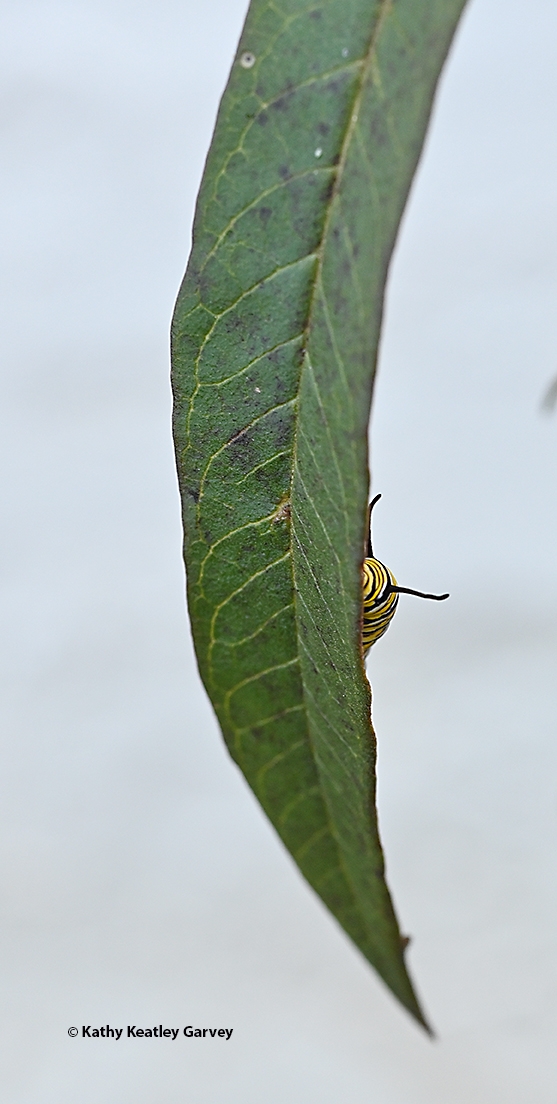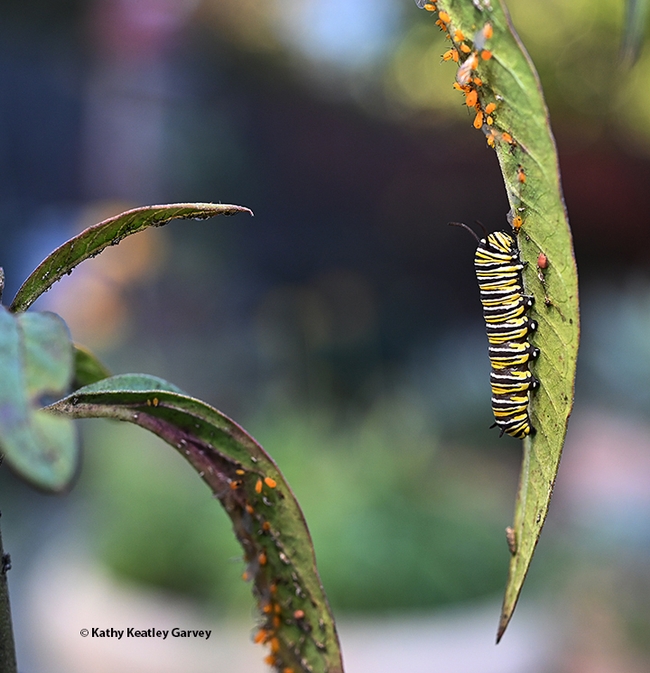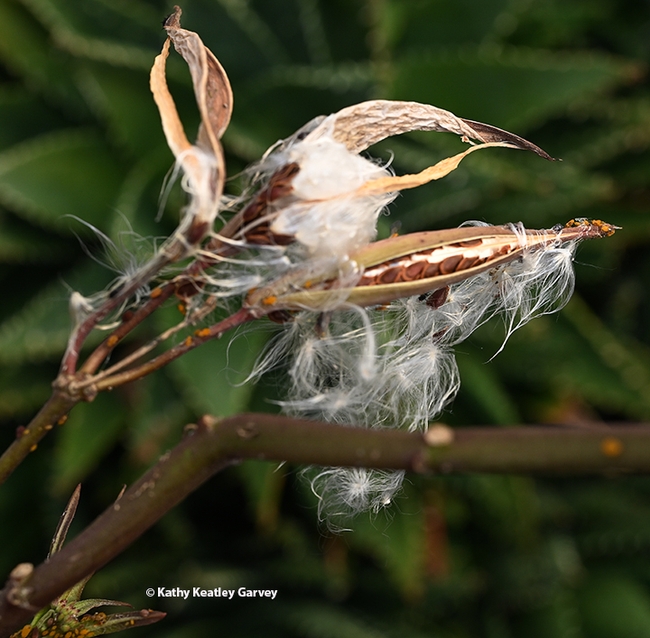
It lived--and quite hidden at that--through the freezing cold, the rain, and the wind. It surfaced today on a milkweed in our Vacaville pollinator garden.
Surprise, surprise! We neither saw it as an egg nor as a tiny caterpillar.
"Most larval mortality in monarchs occurs in the first 2 or 3 instars.. so they keep as hidden and low-key as possible," entomologist David James, an associate professor at Washington State University, told us. "Once they make it to the fourth instar, they are emboldened and are more likely to be seen exposed."
James, who studies migratory monarchs, earlier commented on the fall breeding: "The egg laying females you are seeing now are likely migrants that have eschewed reproductive dormancy for reproduction. This has probably always happened to some extent but is likely more significant now because of warmer falls. The lack of activity in summer in Vacaville was probably a function of most of the population having dispersed further east and north, maybe more than usual? They surely did pass through Vacaville in spring on their way north but clearly didnt stop to use your milkweeds. It does seem that some years they are more prone to frequent stopping/oviposition on their way north and east, yet in others they just keep flying. There's evidence that the latter was the case this year... with as many migrants making it to BC as to Washington...Normally they stop in Washington and only a handful make it to BC."
James is the author of a newly published book, The Lives of Butterflies: A Natural History of Our Planet's Butterfly Life (Princeton University) with colleague David Lohman of the City College of New York. The book, released in the UK on Oct. 3, 2023, will be available in the United States starting Jan. 9, 2024.
Irish scientist Éanna Ní Lamhna recently interviewed the WSU entomologist in a podcast on RTÉ, or Raidió Teilifís Éireann. The book, Lamhna said, "showcases extraordinary diversity of world's butterflies, while exploring their life histories, behavior, conservation and other aspects of these most fascinating and beguiling insects." (See Bug Squad blog). Listen to the butterfly podcast here:
https://www.rte.ie/radio/radio1/clips/22294525/
Meanwhile, we checked another milkweed plant in the garden today and spotted another caterpillar, this one a little smaller and less active than the first.
As UC Davis distinguished professor Lynn Kimsey, director of the Bohart Museum of Entomology, commented: "So much for diapause!"
Now our milkweed garden includes scores of hungry aphids, several species of milkweed, two 'cats, and maybe three (one 'cat went missing and is probably j'ing somewhere) and four chrysalids.
Will we have a Merry Chrysalis?
Attached Images:

